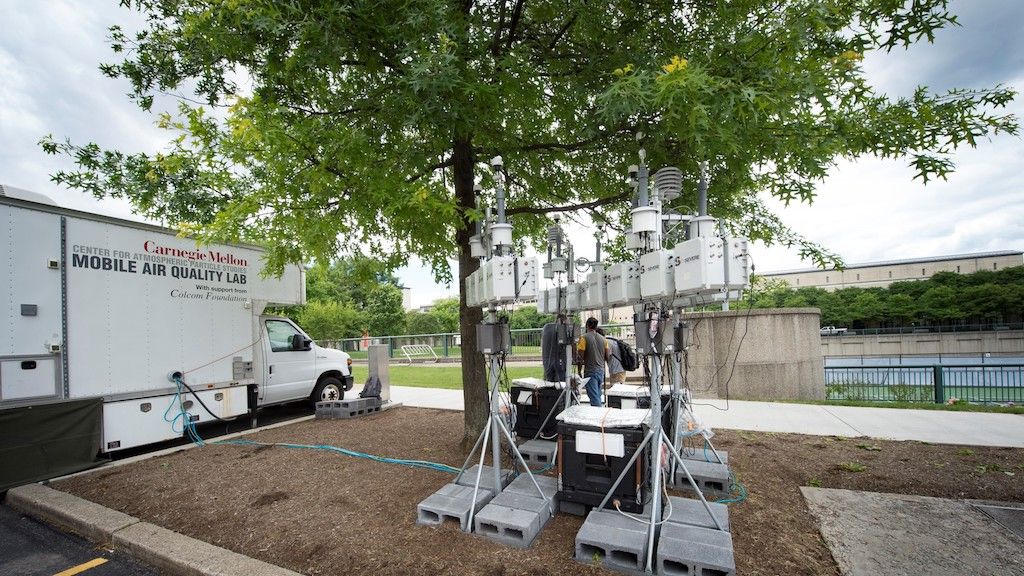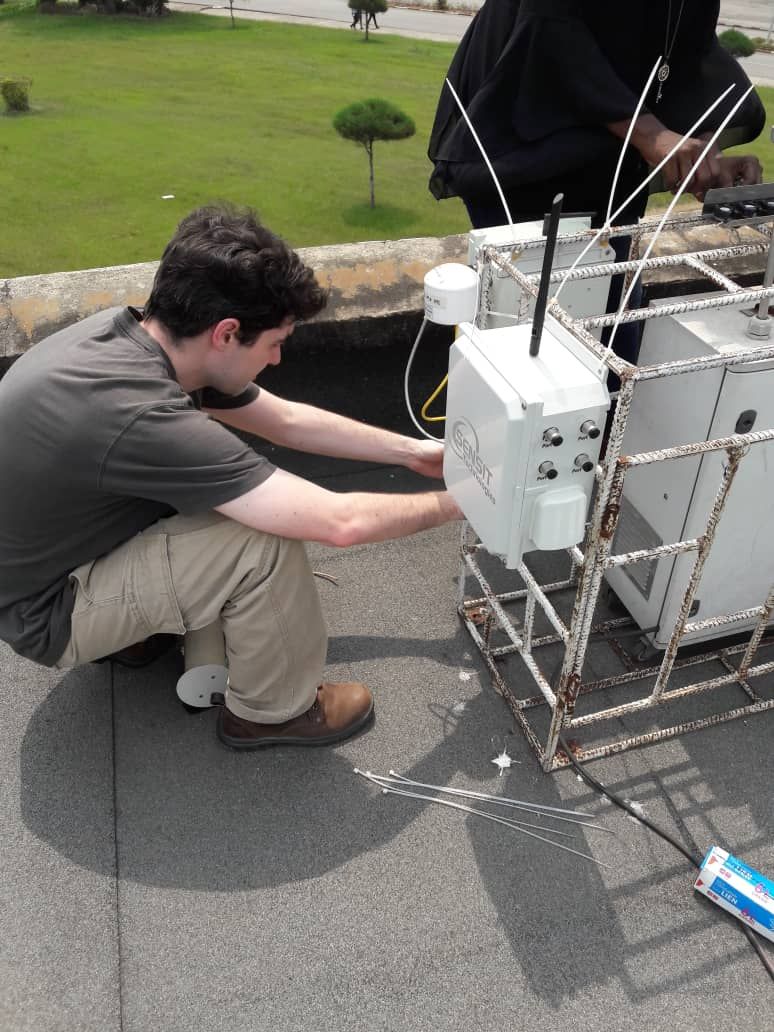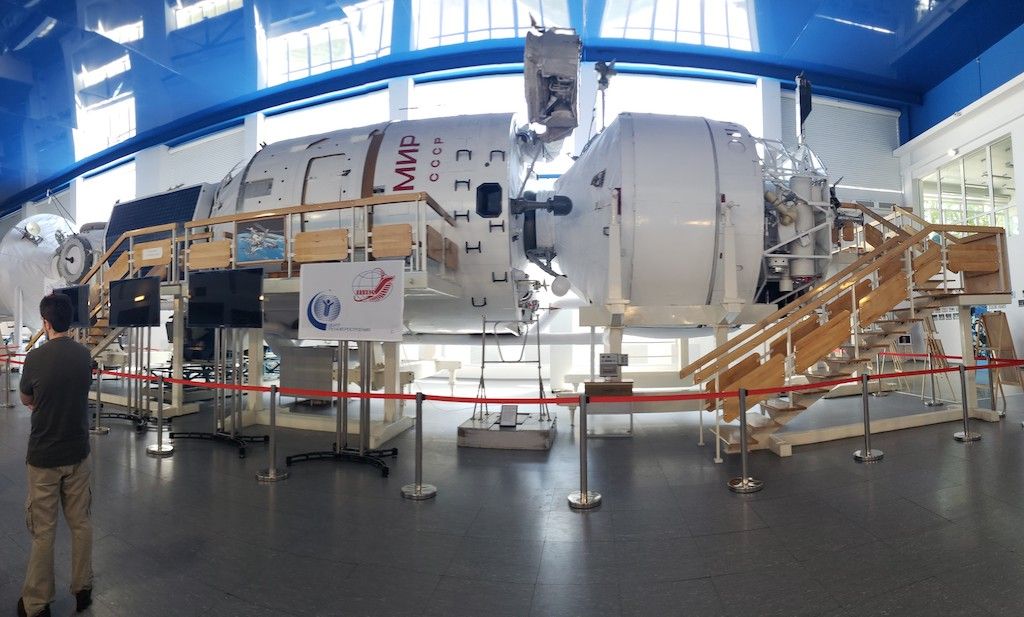Early Career Scientist Spotlight
Dr. Carl Malings
Air Quality Researcher
Earth Sciences Division
Did you always know that you wanted to be an air quality researcher?
No, actually, although I’ve always been interested in related topics. My earliest memory of having a specific career in mind was from about middle school, when I wanted to be a chemist. I had a vision of being surrounded by test tubes and beakers full of colorful bubbling chemicals, and I just thought that would be really cool. As it turns out, however, memorizing long and convoluted chemical formula names wasn’t something I liked.
My next idea was to be an engineer. I’d always been interested in building things that people can use to make their lives easier. I was also good in math and science generally, so I thought that being an engineer would let me take that knowledge and apply it in a practical way to solve problems. By high school, I had settled on Civil Engineering as career path, since I’ve always had a fascination with big structures, and I thought this would be the best way to use my skills to benefit the most people.
How did you end up working at NASA Goddard?
During my PhD at Carnegie Mellon University, I focused on analyzing and optimizing the value of information; that is, how we can most effectively acquire information that will allow us to make better decisions, for example about managing and maintaining our infrastructure systems. When I was finishing my PhD, and looking for what to do next, I met some researchers at my university who were starting to work with low-cost sensors for air quality. As the name implies, these sensors are rather cheap compared to the more expensive instruments that have typically been used in the past to measure air quality, and so can be deployed in larger networks. The researchers I spoke with were wondering how best to use these new low-cost sensor networks to better understand air quality across a city, and my research on information gathering optimization seemed to fit well with that objective. That’s how I got involved with air quality research initially, and I worked on calibrating these sensors, understanding how they respond to different environmental conditions, and deploying them for the next few years. I even spent a year in Paris, France, following my advisor there when he accepted a position and continuing to work on similar problems in a new setting.
When that opportunity was coming to a close, I started to look for where I could use my skills both in information gathering optimization and air quality measurement. I came across an NPP Fellowship opportunity with the Global Modeling and Assimilation Office (GMAO) at NASA Goddard. They work on integrating data from multiple sources to better model earth systems, including the distribution of pollutants in the atmosphere. I thought this would be a great opportunity to bring my experience with measuring air quality with low-cost sensors and optimizing data collection together with their expertise in atmospheric simulation modeling and assimilation of data from many different sources to improve these models. I suppose they agreed, since I was accepted as an NPP fellow, and started my appointment in April 2020.

Credit: R Subramanian
What science questions are you investigating?
My work right now is looking at how we can integrate sources of data on air quality to build up a more comprehensive picture and a robust “best guess” of air quality that can be tailored to the specific local needs of individuals and communities around the world, to help them understand and eventually address their unique air quality situations.
Although we have a fairly good understanding of air quality and air pollution at a global scale, we can’t really make the kind of detailed, specific estimates and forecasts of air quality that can help individuals and communities make decisions about how to react to their local air quality in the short term, and to take specific actions to improve it in the long term. There are many sources of data on air quality, and they each have their benefits and drawbacks. Traditionally, air quality has been measured by government agencies (like the EPA in the USA) using very accurate but expensive equipment at fixed ground monitoring sites, so there just aren’t the resources to monitor air quality everywhere at all times. The problem is even more severe in developing nations, which sometimes don’t have the budget for any regular air quality monitoring at all. The low-cost sensors that I’ve been working on can help to alleviate this problem, but they do still need to be calibrated against the traditional instruments, and even they can’t be everywhere at once. Satellites give a good overview of pollution over large areas, but usually only measure at specific times of day when the satellite is overhead, so we miss out on information about how air quality changes hour-to-hour. Global air quality models are also a great tool, allowing us to forecast how things will develop over the next hours and days, but those forecasts are only as good as the inputs to the model and, as I mentioned, these can be sparse in certain areas due to a lack of monitoring equipment on the ground. By integrating these various sources of data, we can take advantage of their strengths and compensate for their weaknesses, and hopefully get a more complete picture of the situation.

Credit: Carl Malings
Tell us about one project that has been particularly impactful in your field.
I think that my work on the calibration of low-cost air quality sensors has probably had the biggest impact so far. The way this calibration is done is that you take several of these units and put them next to one of the more expensive “trusted” monitoring stations to collect data together. You then use that data to build up a calibration model that corrects the raw signals from the low-cost sensors to give you estimates of the concentrations of the pollutants you are interested in. There are many choices you need to make when building these calibration models, but one, which I looked at, is the difference between what I call “specific” versus “generic” calibration. In “specific” calibration, for each low-cost sensor unit, you create a calibration that is tailored to that unit. In “generic” calibration, you pool the data collected by all units at the same place and time together, and use that to build one calibration which then gets copied over to all of the individual units for use.
Now, when you compare how these calibrations perform at the site where the units were gathering their calibration data, it’s no surprise that the “specific” calibrations do a better job than the “generic” calibrations, since the “specific” calibrations are tuned into any idiosyncrasies of each sensor. However, what I found out was that, when you move these sensors to a new location (such as you do when you finish calibrating the low-cost sensors and send them out into the field), the subtle changes in the environmental conditions and the mix of pollutants at the new site causes the sensors to react in a slightly different way, and now, the “generic” calibrations (which were exposed to data collected by many different units, and thus saw the range in how the low-cost sensors react to the same conditions) perform just as well as, if not better than, the “specific” calibrations at these new sites. This means that we can use “generic” instead of “specific” calibrations for low-cost sensors, which also makes the calibration job much easier. You don’t have to spend time building a separate calibration for each unit you are going to use, and if you get a new unit of the same model as one you’ve already calibrated, you can just copy that “generic” calibration onto the new unit instead of having to collect data to calibrate it from scratch.
Of course, there is still a lot of ongoing work to quantify how well these “generic” calibrations can perform in different situations, especially in climates that are totally different from where the original calibration data were collected, but I like to think that this project and this result was an important piece of the foundation that other researchers will be building on in the future.

Credit: Dr. Julien Bahino
What do you enjoy the most about your job?
Generally, I think the best part of my work is when I get to share it with others, especially others who’ve been working on similar topics. It can be very satisfying to be discussing a problem with someone only to find out they have encountered the same problem in their own experience. Just knowing that they’ve been in the same situation as you, and maybe even had gone through much the same thought process, makes me feel as if I’m part of a much bigger community that is tackling this challenge. That’s something I sometimes miss out on in my day-to-day work, which often has me thinking about these problems and testing out solutions in isolation, and sometimes second-guessing myself about possibly missing out on an obvious answer. It can sometimes be very validating to know you’re not the only one who’s confused about something!
Of course, it’s even better when you can bring them a solution to their problem that they haven’t thought of or been able to implement yet. Walking people through my thought processes and showing them how to implement a method or algorithm I’ve come up with on their own is very gratifying. Maybe it is my background as a civil engineering student, but when my work leads to some concrete solution to a real-world problem, and gets used by other people to make their work easier, it gives me a lot of pride.
What are your future research interests and goals?
My short-term goal, which I guess is probably shared by a lot of other people, is actually getting to physically work at Goddard. I started my NPP fellowship after the mandatory remote work period (due to COVID-19) had started. So, aside from getting my badge, I haven’t actually been to GSFC yet. I’m really looking forward to exploring the campus and getting to meet in person everyone who I’ve only met virtually so far, as soon as it is safe to do so.
Longer-term, I’m hoping that my research here at NASA Goddard will help to develop a scheme for combining air quality data from different sources. Ideally, we could have a system that takes existing model-derived forecasts for air quality and combines them with satellite measurements and other locally-collected information (either available from open-source databases or provided by different users of the system) and outputs a single comprehensive air quality forecast, tailored to the specific needs of different users, with a high enough spatial and temporal resolution to look at short-term and intra-city air quality events. I think that kind of information resource, which has a global scope but is also locally relevant, will be of interest to a lot of scientists, policy-makers, and citizens concerned about the health of their communities.
What do you like to do in your free time?
Like most people at NASA, it seems, I’ve always been a fan of science fiction books, movies, and television shows. I’m currently working my way through The Expanse series of books and the TV show, although Star Trek remains my all-time favorite Sci-Fi universe. To add an extra layer of nerdiness, I love making spreadsheets to catalog and cross-reference information from these fictional worlds. I’m also interested in the history of space exploration, and working at NASA has definitely been a boost to that. There are always great interviews and documentaries coming out, and hearing about these in my “nasa.gov” email inbox is a fun new feeling. I also had the chance to visit the “Star City” cosmonaut/astronaut training center outside of Moscow in 2018, and seeing artifacts there from Vostok-1 to the ISS and everything in between was really unique and fascinating. Finally, to put my civil engineering education to good use, I enjoy playing city-building video games (e.g. Cities: Skylines) when I get a few contiguous hours of free time.

Credit: Erica Frohnhoefer
Biography
Home Town:
Syosset, NY
Undergraduate Degree:
Bachelor of Engineering, Civil Engineering, The Cooper Union for the Advancement of Science and Art, New York, NY
Post-graduate Degrees:
MS & PhD: Civil & Environmental Engineering, Carnegie Mellon University, Pittsburgh, PA
